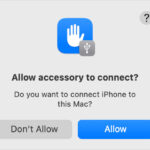Transferring your precious photos and videos from your iPhone to your computer is a common need. Whether you’re freeing up space on your phone, backing up your memories, or editing them on a larger screen, knowing how to copy photos from your iPhone to your computer is essential. This guide will walk you through the most effective methods, ensuring your photos are safely transferred, be it to a Mac or a Windows PC.
Method 1: Leveraging iCloud Photos for Automatic Sync
For users within the Apple ecosystem, iCloud Photos offers a seamless and automatic way to keep your photo library synchronized across all your devices, including your computer. This method eliminates the need for manual transfers and ensures your photos are always backed up and accessible.
iCloud Photos works by automatically uploading your original, full-resolution photos and videos to iCloud. You can then access these files from your iPhone, iPad, Mac, and even your PC via iCloud.com or the iCloud for Windows application.
Benefits of using iCloud Photos:
- Automatic Synchronization: Photos and videos are automatically uploaded and synced across devices.
- Accessibility: Access your photos from any Apple device, on the web, or even on Windows.
- Backup: Your photo library is safely stored in iCloud, providing a backup in case of device loss or damage.
- Space Optimization: Choose to keep full-resolution originals on all devices or device-optimized versions to save space.
How to set up iCloud Photos:
While a detailed setup guide is available from Apple here, here’s a quick overview:
- On your iPhone, open the Settings app.
- Tap on your Apple ID at the top.
- Tap iCloud.
- Tap Photos.
- Toggle iCloud Photos to on.
Before enabling iCloud Photos, ensure you have sufficient iCloud storage to accommodate your entire photo library. You can check your storage and upgrade your iCloud plan if needed here and here.
Method 2: Importing Photos to Your Mac via USB Cable
If you prefer a direct transfer or don’t use iCloud Photos, a USB cable provides a reliable way to copy photos from your iPhone to your Mac. The built-in Photos app on macOS simplifies this process.
Steps to import photos to your Mac:
-
Connect your iPhone to your Mac using a USB cable.
 Accessory prompt to allow or don’t allow accessory to connect.
Accessory prompt to allow or don’t allow accessory to connect. -
You might see a prompt on your iPhone asking “Trust This Computer?”. Tap Trust. This is crucial for your Mac to access your iPhone’s files.
-
Open the Photos app on your Mac (it’s usually in the Applications folder or on the Dock).
-
The Photos app should automatically detect your connected iPhone and display an Import screen. If not, click on your iPhone’s name in the Photos sidebar.
-
Unlock your iPhone using your passcode if prompted.
-
Select where you want to import your photos to. You can choose an existing album or create a new one.
-
Choose Import Selected to import specific photos or Import All New Photos to transfer all photos and videos that haven’t been imported before.
 Mac screen showing the photos available for import
Mac screen showing the photos available for import -
Wait for the import process to complete. Once done, you can safely disconnect your iPhone from your Mac.
Method 3: Importing Photos to Your Windows PC via USB Cable
Transferring photos to a Windows PC also utilizes a USB cable, but requires the Apple Devices app for seamless connectivity.
Steps to import photos to your Windows PC:
-
Download and install the Apple Devices app from the Microsoft Store here. This app is essential for Windows to recognize your Apple devices correctly.
-
Connect your iPhone to your Windows PC using a USB cable.
-
Unlock your iPhone using your passcode and tap Trust on the “Trust This Computer?” prompt if it appears.
-
Follow Microsoft’s guide on importing photos to the Microsoft Photos app in Windows, available on their website here. This guide provides detailed instructions specific to Windows.
Important Considerations for Windows Users:
- iCloud Photos and PC Transfer: If you use iCloud Photos, ensure you download the original, full-resolution versions to your iPhone before importing to your PC for optimal compatibility. Instructions for downloading originals can be found here.
- Video Orientation: Some videos may appear rotated incorrectly in the Microsoft Photos app. Adding these videos to iTunes can resolve orientation issues for playback.
- Photo Compatibility: For best compatibility with Windows, you can adjust your iPhone camera settings to capture photos in JPEG and videos in H.264 formats. Navigate to Settings > Camera > Formats and select Most Compatible.
Choosing the Right Method
Both iCloud Photos and USB transfer methods effectively copy photos from your iPhone to your computer.
-
iCloud Photos is ideal for users who want automatic syncing, backup, and accessibility across Apple devices and beyond. It’s the most convenient option for staying within the Apple ecosystem and ensuring your photos are always safe.
-
USB cable transfer is perfect for users who prefer direct control over the transfer process, need to transfer large amounts of data quickly, or don’t rely on iCloud Photos. It’s also a solid option for transferring photos to a Windows PC.
Ultimately, the best method depends on your individual needs and preferences. By understanding both iCloud and USB transfer options, you can confidently copy your photos from your iPhone to your computer and manage your digital memories effectively.
